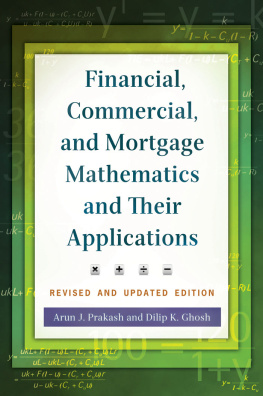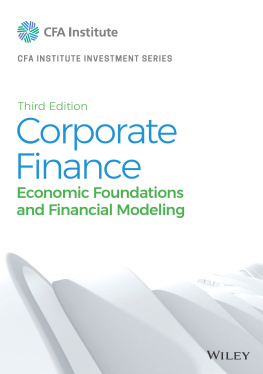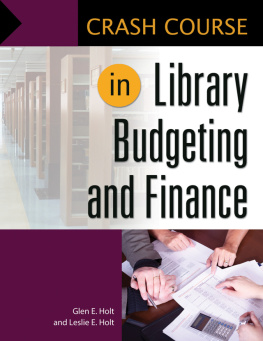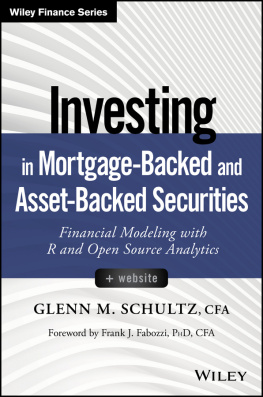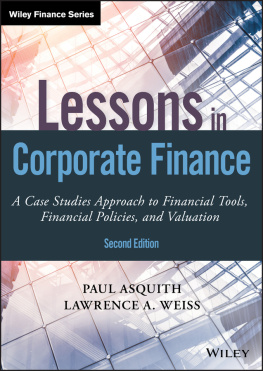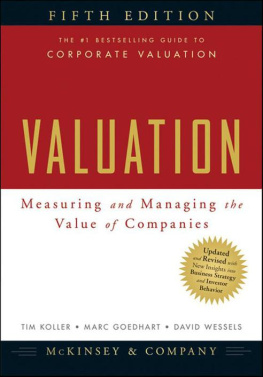Financial, Commercial, and Mortgage Mathematics and Their Applications
Revised and Updated Edition
Financial, Commercial, and Mortgage Mathematics and Their Applications
Revised and Updated Edition
Arun J. Prakash and Dilip K. Ghosh
Copyright 2014 by Arun J. Prakash and Dilip K. Ghosh
All rights reserved. No part of this publication may be reproduced, stored in a retrieval system, or transmitted, in any form or by any means, electronic, mechanical, photocopying, recording, or otherwise, except for the inclusion of brief quotations in a review, without prior permission in writing from the publisher.
Library of Congress Cataloging-in-Publication Data
Prakash, Arun J.
Financial, commercial, and mortgage mathematics and their applications / Arun J. Prakash and Dilip K. Ghosh. Revised and updated edition.
pages cm
Includes bibliographical references and index.
ISBN 978-1-4408-3093-8 (hardcopy: alk. paper) ISBN 978-1-4408-3094-5 (ebook)
1. Business mathematics. 2. Real estate businessMathematics. I. Title.
HF5691.P69 2014
650.01'513dc23 2014021622
ISBN: 978-1-4408-3093-8
EISBN: 978-1-4408-3094-5
18 17 16 15 14 1 2 3 4 5
This book is also available on the World Wide Web as an eBook.
Visit www.abc-clio.com for details.
Praeger
An Imprint of ABC-CLIO, LLC
ABC-CLIO, LLC
130 Cremona Drive, P.O. Box 1911
Santa Barbara, California 93116-1911
This book is printed on acid-free paper 
Manufactured in the United States of America
Contents
As in the previous edition of this book, this textbook deals with the time value of money and its common applications in the fields of real estate, commercial loans, and capital budgeting. So what is the difference now? From more than two decades of use and many comments from the users of the previous text, we have divided the book into 22 chapters instead of the previous 5 even though, broadly speaking, the stratification retains the original characteristics of the book. For example, traditional finance and real estate textbooks. However, this book does have several advantages over traditional books.
We have attempted to integrate the material in this book in a manner that allows users to follow both the application and derivation of many of the formulas. One general problem with traditional texts is that the cookbook approach leaves many students confused and the most serious students frustrated. We have attempted to get away from that approach. In most instances, a concept is set forth and formulas derived with the aid of a time-line diagram or a simple intuitive explanation as to the nature of the problem. Once the solution or equation has been obtained, an application follows immediately.
In writing the application problems, we have tried to be clever enough to provide a challenge without making the problems so difficult as to be frustrating. We have tried to illustrate how and where relevant information is used. We do not want the reader to simply plug in the numbers; we want the reader to be able to use the formulas under alternative sets of circumstances.
The derivation of formulas makes the text challenging for serious students of mathematics and can be applicable to other fields related to the time value of money and its applications in areas such as capital budgeting and the like. By providing the derivations, we hope to allow for a greater understanding of the concepts and for continuity in thought in approaching more complex problems. Those who are not interested in the derivations can skip those parts, as the mathematical results are not only conveniently provided in boxes set off from the main text, but there is also a section that deals with the use of financial calculatorsa feature that was absent in the previous edition. Almost anyone acquainted with reading formulas should be able to easily use the text.
There was little mention in the previous text of the use of calculators. At that time, we did not consider it a purpose of the text to show how to use a calculator in solving problems. However, the times have changed and during the last five years we have been constantly asked to add the use of calculators in solving problems wherever feasible. The standard financial calculator will not be able to solve all the problems, but wherever it can, the computational steps of using a calculator have been added. Almost any calculator can be used to solve the problems in the text. The two main mathematical requirements of the calculator are the ability to utilize exponential functions and logarithmic functions besides the standard programming related to time value of money. The rules for using exponents and how they relate to the use of a calculator are treated in the book; this should be sufficient for working almost all of the problems.
The text can be used for a variety of purposes. It can be used either as a stand-alone text as a second course after the introductory course in finance at the undergraduate level or as a supplement to standard corporate and real estate finance textbooks. The level is sufficiently general to allow the textbook to be used as a supplement in either undergraduate or graduate classes.
The textbook is also targeted for professionals in real estate, banking, and law. Many of these practitioners are well acquainted with obtaining the solution to time value of money problems through programmable calculators but could generally improve upon their understanding of the assumptions and variations in many of the formulas. The large number of examples, more than twice in number in comparison to the previous edition, makes this text ideal for such use. The text would thus provide a handy desktop reference for practitioners in the above-mentioned areas.
Finally, the book could be used as a basis for conducting short courses or seminars in financial mathematics. Many companies offer continuing education classes such as finance for nonfinancial managers. The financial orientation of this text with many more problems and additions of use of calculators makes this book a good candidate for use in such course.
We have received assistance in this project from many colleagues and students, and we are grateful to all. We would like to give special thanks to our colleagues, especially Profs. Chun-hao Chang and Shahid Hamid, who provided us valuable help in topic selection, selection of the problems, and so on. Also, our special thanks go to two of my students, Alejandro Pacheco and Srinivas Rao Cheeti, who painstakingly checked the computations and formatting and performed myriad of other tasks usually associated with the production of a very quantitatively oriented book like this.
We are sure that no matter how many times we went over the computations, there must be some errors. If you find these, please e-mail us at either prakashadehuni@yahoo.com and/or D.Ghosh4@msn.com.
Section One
Mathematical Foundation
One
Mathematical Foundation
Many of the decisions individuals make or those made by a business firm require analysis of future benefits or costs. When looking into the future, the old adage time is money becomes very appropriate. The time value of money has become quite apparent to all in recent years because of record-high interest rates.
The fact that a given sum of money can generate more satisfaction today than at some point in the future suggests a time cost or time value of money. In order to compare money to be received at different points in time, a standardized measure of common denominator is needed. This is exactly the idea of the concept of present value. The present value of money to be received in the future is the amount one would have to receive today to be willing to give up the claim to the future money.

